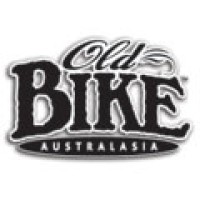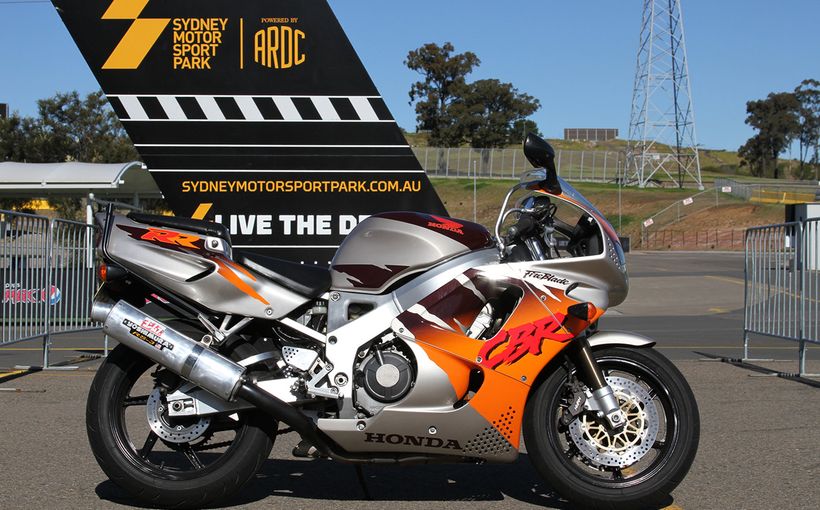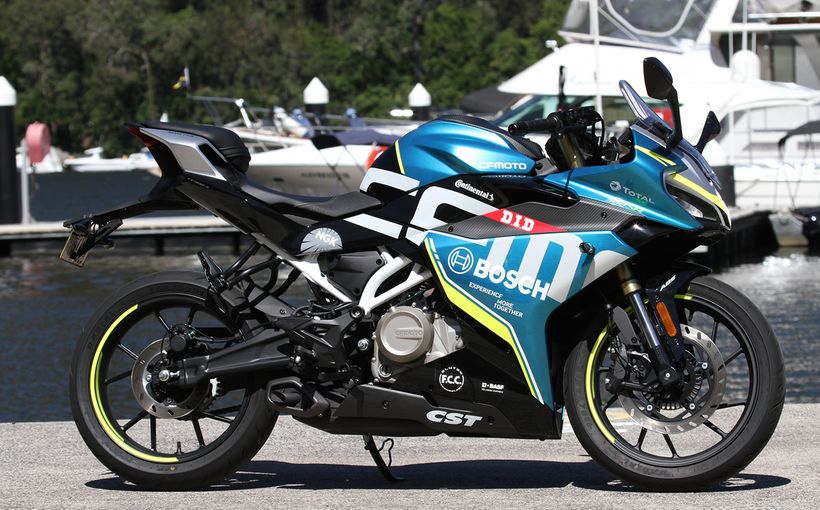
The Benelli marque is 106 years old, and there are few names that evoke such reverence in motorcycling as the one founded by the six Benelli brothers – Mimmo, Filippo, Giuseppe, Francesco, Giovanni and Tonino – in Pesaro on the Italian Adriatic coast. Yet in that almost-century, poor old Benelli has had more ups and downs than a yo-yo, with numerous owners, well-intended but ultimately catastrophic rescue attempts, plus some times of brilliance and glory. The business began as a simple repair shop, servicing cars as well as motorcycles, but quickly gained a manufacturing facility to produce spare parts. The brothers’ first motorcycle was a 98 cc two-stroke, which grew into a range of 125, 150 and 175 cc machines. In 1927 the company built its first four-stroke, a 175 cc OHC single, and this was the springboard that thrust Benelli into the upper league of motorcycle manufacturers in Italy. The model also launched the racing career of Tonino Benelli, who won the Italian Championships on the 175 in 1927, 1928 and 1930, and again in 1931 with a twin-overhead camshaft version. But the machine that really hit the headlines was the incredible 250 cc four-cylinder water-cooled supercharged racer, which was revealed in 1939 and intended for racing in the 1940 season. With 52 horsepower on tap at 10,000 rpm the 250 was a rocket, but alas, the war intervened and this fabulous creation went the way of several other exotic racers destined for the pre-war supercharged formula.
The Benelli factory sustained severe damage in the conflict, and did not reopen for production until 1949, and in the same year Giuseppe left to form the Motobi company. At first, the new range was essentially of pre-war design, but it was gradually improved as the company’s finances strengthened and by the early 1950s Benelli was again a major force, at least on the home scene. For a short period, Benelli was on top of the world, with Dario Ambrosini winning the 1950 250 cc World Championship on a DOHC single. He looked set to do it again the following year, winning the opening Swiss GP and finishing second in the Isle of Man, but he crashed fatally at the next GP, the French at Albi. Benelli were devastated and withdrew from racing for the next eight years, until in 1969 Australian Kel Carruthers brought them a second 250 title.
For the next decade, Benelli took only a perfunctory interest in racing and turned its attention to producing a diverse range of new road machinery, beginning with the 643 cc OHV twin, sold as the Tornado 650, in 1970. But the company was by now in real strife, fighting, like most others, to stay competitive with the torrent of new motorcycles from Japan. In 1972 Benelli succumbed to the advances of the Argentine industrialist Alejandro de Tomaso, who also took over Moto Guzzi, and set about production of a snazzy new range of multi-cylinder models – the 350 and 500 Quattro and the incredible 750 Sei – a six-cylinder across-the-frame job that pre-dated the Honda CBX by six years. Exciting these models may have been, but reliability was not a strong suit, and the marque’s decline continued until 1988 when it was merged with Moto Guzzi to create Guzzi Benelli Moto S.p.A. and the old Pesaro plant closed.
Think small
Harking back to 1972, while the big multis were gathering most of the headlines, Benelli was also hard at work on a range of machines that reflected the company’s roots – two strokes. Top of this range was the 2C, which also appeared badge-engineered as a Motobi 2C and a Moto Guzzi 250 TS, and was sold in the US as a Benelli Phantom. Prior to the de Tomaso takeover, Benelli engineers had been developing the vertical twin two stroke design, but one thing they overlooked was the by-now obligatory oil injection system, which placed the 2C behind the 8-ball from the start, as riders of the ‘70s had universally revolted against mixing petrol and oil during refuelling stops, although in scooter-mad italy, the practice was commonplace and most fuel stations had pumps to dispense pre-mixed petrol and oil in several ratios. This feature, or the lack of it, helped kill off other two-strokes of the era, notably the Spanish Bultaco Metralla and Montesa Impala. It was curious also that in this day and age, 6 volt electrics could be employed when virtually all the competition sported 12 volts, and the electrical specification did not stretch to traffic indicators, at least in the early shipments. Another setback for sales was the whopping $779 price tag in Australia, around $100 dearer than the six-speed Yamaha RD250, which would also run rings around the 2C in the performance stakes. The standard model made do with a humble flywheel magneto and points, but for an extra $90, a CDI model (the 2CE) was listed.

On the positive side, the 2C handled superbly, thanks to the neat full cradle frame (built by the family-owned Benelli Armi concern in nearby Urbino) and the Marzocchi front and rear suspension. The brakes were excellent as well – a double-sided single-leading shoe Grimeca at the front and a single-sided job at the rear.
The first we saw of the 2C in Australia was when a lone machine was entered in the 1973 Castrol Six Hour Race at Amaroo Park, with riders John Vale and Tony Ward. After a few misadventures it finished 11th in the 250 class on 295 laps, 31 laps behind the winning Yamaha RD250. Nevertheless, the performance must have impressed a few onlookers, because a small number of 2Cs began to find new owners, despite the shortcomings and the premium price. In a sea of Suzukis and Yamahas, there were still those who wished to stand out from the crowd. Individualism is one thing, but patience is another. Fairly soon, flaws began to show up as the few 2Cs on the roads began to clock up some kilometres, the most serious being a tendency for the left-side big end bearing to conk out, although this mainly seemed to affect the models sold in the UK and a replacement Alpha big end cured the problem. There were also problems with the Aprilia-produced switch gear and wiring harness, which only added to the ‘Italian electrics’ syndrome that had blighted the country’s two-wheeled products for ages. Indeed, the incessant warranty problems led to the UK importer handing back the franchise.
Catching the disease
Local distributors came and went during the ‘70s, so it is no surprise that of the few 2Cs sold here, even fewer still exist. But down in McLaren Vale, in the choice wine country of South Australia, there is today a colony of Benelli 2Cs that probably accounts for most, if not all, of the surviving examples.. Here, in Tony Morisset’s well-appointed workshop and mini-museum was not one, but six separate 2Cs, including a Moto Guzzi clone!

“I guess I started the disease,” admits Tony, as I admired the collection, including a few basket cases awaiting attention. “ I saw the 2C in the seventies, and Sei and the Tornado, but nobody considered the 250 because it was something like 20% dearer than the Yamahas and Suzukis, had petrol/oil mix and so on. For me at that age, all you wanted to know was what was the top speed, could it go as fas as the RD Yamaha – just teenager talk but that was what mattered then. But later on I saw an article in Classic Motorcycle Mechanics, and they described it as a modern classic; a sturdy engine that wasn’t that far off the Yamaha’s pace in a straight line, a chassis that delivered impeccable handling, magnesium Grimeca double-sided front brake, polished alloy Marzocchi triple clamp and front forks, Tomaselli grips and controls, Silentium silencers, Sanremo flanged rims, and Aprilia electrics, so I got interested again and the hunt was on! Less than two weeks (in October 2007) later one appeared on eBay here in Adelaide. I was determined to buy it ‘at any cost’ and I won the auction because I was the only bidder! When I got it home the downside of my purchase became apparent. The bike had obviously spent years in the open - everything metal was rusted. The rear guard and tail light were Yamahas items, there were no carbys, airbox or tooltray and the kickstart shaft was snapped off level with the crankcase. The electrics were just a mass of tangled wires.”
The ghastly mess that emerged from the strip down only made Tony more determined to resurrect his basket case, and in his quest he had the support and mechanical knowledge of his friends Don Tonkin and Jim Motillo to draw upon. It immediately became apparent that the most expedient way to produce a complete and original 2C was to find at least one more basket case and make a good one out of two. Another appeared (on eBay) in Sydney, and after another successful bid, the boys jumped in the car and drove up to collect it. Remarkably, the seller was contacted by someone else to say that he had a heap of parts for the model, and whoever bought the bike could have them! Things were falling into place. By this stage Tony had ascertained that Australia was practically devoid of new-old-stock Benelli parts, except for the occasional swap meet (which amazingly unearthed a replacement for the sheared-off kickstarter shaft), but around the world there were indeed caches of replacement bits.

Pistons were a particular problem, until eBay came to the rescue again. “The 2C pistons are distinctly different to other two stroke pistons, with high gudgeon pins and a 62.5 mm bore, so no Japanese pistons would fit, “ explains Tony. “Then we got onto a guy in Italy who had eight pistons listed for sale, and we bought six at $90 a pair. Jim Motillo speaks Italian so we were able to do the transaction in Italian. Later we got more pistons from the US, because the bikes were sold there as Phantoms and dealers still have a few parts. It’s worth noting that pistons have to be matched to barrels which are stamped A or B for different port locations, and also the later chrome bore barrels won’t take the earlier type pistons. I also got a N.O.S. plastic tool tray from Italy. Of all the 2Cs we have found, none has more than 10,000 km on it, so generally the engines were in fairly good shape.”
The Silentium silencers are quality items that are worth preserving, and because of the amount of two stroke oil that builds up inside, are often reasonably well preserved. The process of bringing them back to their gleaming original condition, however, is expensive, as Tony recalls. “ The metal quality on these silencers is very good. The chrome platers can, if they go to a little trouble, even save those Silentium logos. Similarly, some platers won’t want to do the flanged chrome rims. A good plater will make them look a million dollars but expect to pay for it. I went round to my plater and saw the work involved in polishing the flanged rim – but it’s worth it.”
The 2C bears the distinctive styling influence of de Tomaso, who loved angular designs, and the bikes certainly stand out from other (read Japanese) 250s of the era for this reason. Tony’s first purchase was blue, but he opted to finish it in the red and black décor that was also available – it is Italian after all.
Born again
In the years since the first tatty and incomplete 2C arrived in Tony’s workshop, no fewer than five more similarly decrepit machines have joined it, and while the original plan was to build the first bike for Tony, it was logical that Don and Jim would become similarly smitten. So by late 2009, three gleaming examples were ready – Tony’s red one, a green one for Don, and a blue one for Jim. And this is by no means the end of the story, because another near-neighbour, Michael Scarpantoni (like Jim, a local McLaren Vale wine grower), decided he too needed a 2C and is presently completing a white model. This, as Tony points out, will give the complete Italian national spectrum – the red, white and green of the national flag – plus the blue of the Italian soccer team!

“I should make special mention of Don Tonkin’s input into these restorations,” says Tony. “ Don largely restored the red and green bikes and guided us in the restoration of the others. Additionally, the electrics on these bikes - probably all Italian bikes of the period – were pretty awful. The Aprilia switchgear left a lot to be desired, and the wiring itself was a nightmare. The way they were set up, the headlight would not operate without the engine running. Instead of the Italian complexity, Don and I together developed a simple system more like the Nortons and BSAs of the time, using a Zener diode and rectifier. It’s simple but it seems to have done the job really well.”
A few years back, the three members of the McLaren Vale ‘Benelli Brigade’ set off on their newly restored steeds for a tour of the district and returned convinced their investment – both in monetary terms and in countless hours in the workshop – was well worth it. Initially, 20:1 petrol/synthetic oil mixture was used, but this resulted in erratic running and oiled spark plugs. A radical change to 50:1 cured the problem completely and also produced considerably more power and torque with easier starting.

After a session running the camera over the three completed bikes (plus Michael’s semi-finished white model), I was invited to sample Tony’s bike around the delightful, made-for-motorcycling roads that meander through the vineyards of the region. Tony jumped onto Don’s green machine to lead the way, and off we went. The first impression is just how tiny the 2C is beneath you, and how hard the seat is. But that handling – quintessentially Italian, razor sharp – is an open invitation to peel through corners as if they were not there. Observing the instruction to work the power band means stoking the fire through the gears, but the Benelli is surprisingly torquey; zooming up the hills in top gear is the norm, or if you prefer to arrive a little quicker, just knock it back a gear and feel the rush. Speaking of gears, you have to remind yourself that this box works backwards to the normal patter –up for first – in what has come to be referred to as a ‘race pattern’ – and the lever movement is rather long. The front brake is a delight to use and really effective, retarding progress in a time-honoured way that only a well-fettled drum does over a disc. Immediately, I was reminded of days long gone when hammering a 250 Production bike around tighter tracks like Amaroo Park was one of the true delights of road racing.
As far as eye-candy goes, the Benelli has it in spades. The bikes are real head-turners whenever they appear and with one more soon to be added to the complement, McLaren Vale has become the 2C capital of the country. As Tony puts it, “I can’t be sure if we have actually bought every 2C in Australia, but I can’t imagine they sold that many of them.”
Specifications; Benelli 2C
Engine: 231.4 cc piston-port twin cylinder two stroke, bore & stroke 55 mm x 47 mm. 25 hp (18.6 kW) at 6,850 rpm.
Carburation: 2 x 22 mm Dell’Orto
Ignition’ Battery and coil – 6 volt.
Transmission: five-speed gearbox with chain final drive.
Wheelbase: 1320 mm
Suspension: Marzocchi twin-damped forks with 11.4 mm movement, Marzocchi rear shock absorbers with 3-way load adjustment.
Weight: 140 kg with fuel.
Top speed: 85 mph
Standing quarter mile: 16.8 seconds.
Tyres: Front 3.00 x 18, rear 3.25 x 18
Protect your Classic. Call Shannons Insurance on 13 46 46 to get a quote today.










